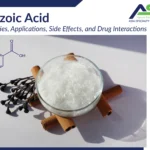Vietnam’s Cinnamon Cassia has witnessed a remarkable surge in market share within North America and Europe, signaling the country’s ascent as a key player in the global spice trade. Renowned for its distinct aroma and flavor, Vietnamese Cinnamon Cassia has rapidly gained popularity among consumers and culinary enthusiasts alike, positioning Vietnam as a significant supplier in international markets.
This growth in market dominance reflects not only the superior quality of Vietnamese Cinnamon Cassia but also the country’s strategic efforts to meet the increasing demand for exotic spices. In this context, exploring the factors driving Vietnam’s Cinnamon Cassia’s expanding presence in North American and European markets offers valuable insights into the dynamics of global spice trade and the evolving preferences of discerning consumers.
Read more: https://asi-vn.com/all-about-cinnamic-aldehyde/
Table of Content
ToggleWhat is Cinnamon Cassia and typical Cinnamon Cassia in Vietnam?
Apart from Ceylon cinnamon (C. verum), Indonesian cinnamon (C. burmannii), and Malabar cinnamon (C. citriodorum), Cinnamomum Cassia is one of several species of Cinnamomum. This evergreen tree is native to South and Southeast Asia, especially southern China (Chinese Cassia) and Northern Vietnam (Vietnamese Cassia). It is now commonly grown throughout tropical or subtropical rural areas in China or South and Southeast Asia (India, Indonesia, Laos, Malaysia, Thailand, and Vietnam).
Cinnamomum cassia tree can reach a height of 10–15 m. It has reddish leaves when young and stiff, elongated leaves that are 10–15 cm long when mature. The bark is grey-brown in color and can be up to 13mm thick. Although they can withstand more sun as they get older, young trees thrive in partial shade.
Despite both being known as Cinnamomum Cassia, there are some differences between the trees grown in Vietnam and in China. Cassia from China is recognized as less aromatic than that from Vietnam. The reason is that Vietnamese cassia is characterized by a relatively larger amount of Cinnamic Aldehyde, the organic compound with a strong special odor and flavor of cinnamon. The Cinnamic Aldehyde can reach 77-88% when extracted from Vietnamese cassia leaf oil or even up to 89% when extracted from bark oil. On the other hand, there is only 64.1-68.3% of Cinnamic Aldehyde in the Chinese cassia leaf oil.
However, it was clarified that Chinese Cassia has comparatively higher concentrations of Cinnamyl Acetate and Orthor Methoxycinnamaldehyde. Coumarin, an organic chemical compound that is believed to be harmful to health when consumed in high doses, in Chinese cassia is significantly less (0.03-0.08%) than in Vietnamese cassia (1.0-5.0%).
Vietnam’s Cinnamon Cassia is dramatically increasing its market share in North America & EU according to statistics
Vietnam makes up 17% of the world’s cassia cultivation area, or over 150,000 hectares, according to the Vietnam Administration of Forestry’s data in 2023. This is currently the source of income for thousands of households belonging to ethnic minorities in isolated regions, and it also helps many areas’ socioeconomic growth.
Following China and Indonesia, Vietnam is the world’s third-largest producer and exporter of cassia products such as bark, essential oil, and other related products. In 2023, Vietnam earned over 260 million USD from the export of approximately 90,000 tons of cassia, a 14.6% increase in volume but a 10.7% decrease in value over 2022. India, the USA, Europe, China, and Bangladesh are the top destinations of Vietnam cassia.
Especially in recent years, Cinnamon Cassia products from Vietnam have accounted for a continuously bigger market share in North America and Europe.
In North America
About 75% of Cinnamon used in North America is Cinnamon Cassia, mostly from Indonesia. Export of Vietnamese cassia to the USA increase 7.0% in 2023, reaching 10.163 tons, according to the Vietnam Pepper and Spice Association (VPSA).
Vietnamese cassia also has seen a sharp rise in the Canadian market, rising more than 43% over the previous year. Canada is currently a country that consumes a lot of cinnamon, which import growth rate reached 17.5% last year. As forecasted, the market share can reach 50% in the coming years. Cassia is being used in food and medicine by more and more Canadians. Numerous studies have demonstrated the benefit of cassia in increasing immunity, particularly in the wake of the COVID-19 pandemic.
However, Mexico, the last country in North America area, only consumes Ceylon Cinnamon, which comes from the Indian Ocean Island of Sri Lanka. It is because Mexico inherited this tradition from its former colonial master Spain.
In Europe
In Europe, the Netherlands, Germany, the United Kingdom, Spain, France, and Poland are considered the most promising European markets for Vietnamese cassia. The reason is that these countries have developed spice and herb markets, a sizable food and beverage industry, and a custom of regional recipes that use cassia as one of the most common ingredients.
Vietnamese cassia accounts for about 20% and more of the market share in the Netherlands and Germany. In the United Kingdom and Spain, the proportion is nearly 30%, making Vietnam the biggest exporter of cassia and related products in these two countries. Even though its market share is only 10-15% in France and Poland, Vietnam is still recognized as the second top supplier of cassia here following Indonesia.
The European food and beverage industry uses cinnamon extensively in a variety of applications. It is also among the spices that are traded the most in Europe. With the growing popularity of Asian cuisines in Europe, cinnamon is being employed more and more in product invention and development. Cinnamon imports from Europe have increased somewhat in volume, but their sharp rise in value suggests a significant price increase in recent years.
Conclusion
Vietnam’s Cinnamon Cassia’s growing market share in North America and Europe underscores the country’s emergence as a major player in the global spice industry. With its unique flavor profile and high quality, Vietnamese Cinnamon Cassia has captured the attention of consumers and businesses alike, driving demand and expanding its presence in international markets. This success story reflects Vietnam’s commitment to quality control, sustainable production practices, and market innovation.
As Vietnam continues to assert its position as a leading exporter of Cinnamon Cassia, it not only contributes to the country’s economic growth but also enriches the culinary experiences of consumers worldwide. Looking ahead, sustained efforts to maintain product excellence and meet evolving consumer preferences will be essential in further solidifying Vietnam’s position as a dominant supplier of Cinnamon Cassia in North America and Europe.
Read more: https://asi-vn.com/top-associations-events-of-fragrance-flavor/
Asia Specialty Ingredients (ASI), part of Asia Ingredients Group (AIG), specializes in the production and global export of essential oils and natural aromatics. Our range of products is meticulously processed using only the finest natural ingredients sourced from the typical lands of Vietnam, including Cassia, Basil, Star Anise, and more, ensuring good product quality. Contact us for more collaboration opportunity!








